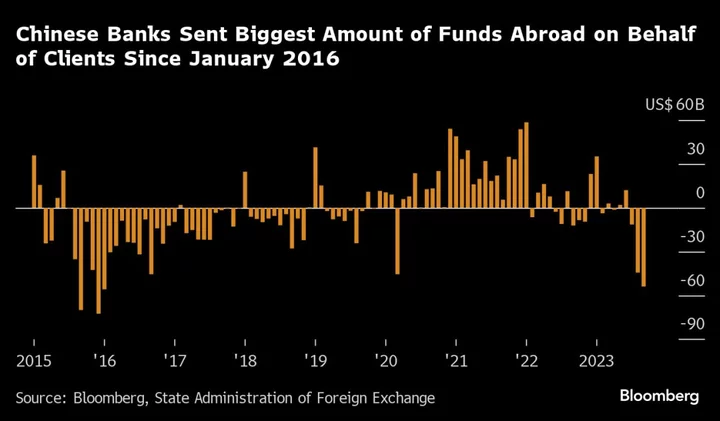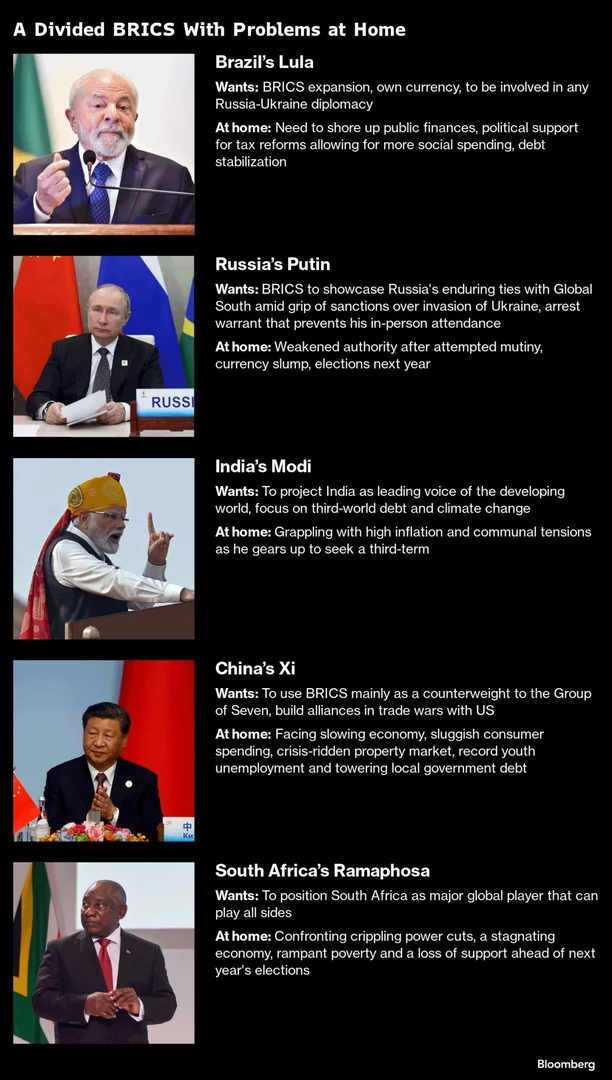Capital is exiting China at the fastest pace in more than seven years, piling extra pressure on the yuan.
The exodus has intensified in recent weeks as the nation’s teetering real estate industry casts a shadow over the world’s second-largest economy even after third-quarter growth surpassed economists’ expectations.
China’s currency regulator — the State Administration of Foreign Exchange — said Friday onshore banks sold a net $19.4 billion of foreign currencies to their clients last month, the most since November 2018, the height of the US-China trade war. Banks also sent a net $53.9 billion overseas on behalf of their customers, the biggest monthly outflow since January 2016, shortly after policymakers engineered a depreciation of the currency in August 2015.
Goldman Sachs Group Inc. said it’s seeing a similar trend in its preferred gauge, which aggregates transactions in onshore outright spot market, forward market and an official dataset that measures net payments of the yuan from onshore to offshore. Net outflows climbed to around $75 billion in September, the most since late 2016 and an almost 80% increase from August, the firm said in a report.
The outflows are placing downward pressure on the yuan, which has weakened this month in both offshore and onshore trading. The currency is less than 1% away from this year’s lows reached in early September.
The shift in part reflects the divergence between interest rates abroad and those in China, where the central bank has been keeping them low in an effort to revive the economy. That’s widened the gap between US and Chinese yields to the most in over two decades.
“The unfavorable interest-rate spread between China and the US will likely imply persistent depreciation and outflow pressures in coming months,” Goldman analysts led by Maggie Wei and Hui Shan wrote in the note.
Twin Outflows
China saw outflows from both the current account and capital account in September, official data showed. Contributing factors included a service deficit linked with outbound travel, a slump in direct investment and extended securities-related outflows.
Overseas funds cut their holdings of Chinese sovereign bonds by 13.5 billion yuan ($1.85 billion) in September, according to data released by China Central Depository & Clearing Co. on Friday. Their total holding of the debt dropped to 2.07 trillion yuan, the lowest since March 2021.
China’s stock market downturn is also taking a toll. Global funds sold $1.6 billion of onshore equities Thursday through trading links with Hong Kong, the most in more than two months, as the benchmark CSI 300 index tumbled to a new low for the year.
With the Shanghai Composite Index dipping below 3,000 on Friday, Morgan Stanley said the exodus from onshore equities has entered “an unprecedented stage” and global funds may keep selling unless there is further policy easing.
The cumulative outflows between Aug. 7 and Oct. 19 amounted to $22.1 billion, the biggest in the history of Stock Connect, strategists including Laura Wang wrote in a client note. Stock Connect refers to the trading links between Hong Kong and mainland China, which were expanded in late 2016 to encompass both the Shanghai and Shenzhen exchanges.
--With assistance from Jacob Gu.









